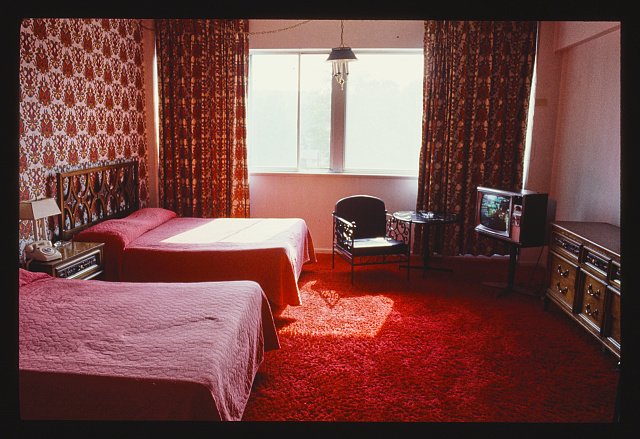
Hotel
Architectures to think with #1
Deadline for proposals (up to 500w)
4th Feb 2024
ABOUT ARCHITECTURES TO THINK WITH:
To paraphrase and adapt a remark by Claude Lévi-Strauss: some architecture is good to dwell in, but some architecture is also good to ‘think with’. In a series of thematic issues in the coming years we want to focus on a specific architectural typology that can be used as such a “thinking tool”.
How does the built environment allow us to dwell, but also to think in an embodied way about modes of existence?
The hotel, as a very particular, ambiguous environment, seems a good starting point.
The crumbling Hotel Splendid of Marie Redonnet. The room where Lisa Robertson’s Hazel Brown awakens. The autofictional reflections of Joanna Walsh’s experience as a hotel reviewer. And of course, the multilinear, hybrid Hotel Theory of Wayne Koestenbaum.
But also - the hotels where Sophie Calle snoops. Joanna Hogg’s grand, unsettling hotel where The Eternal Daughter lingers. The lonely quarters painted by Edward Hopper. The misanthropic atmosphere of Fawlty Towers. Robert Smithson’s lecture on the surreal Hotel Palenque. The white fantasies of the White Lotus. The bloody trail in Norman Bates’ motel.
Hotels are, quite literally, everywhere.
Business hotels, love hotels, spa hotels, chain hotels, capsule hotels, the-only-one-around hotels, mass-tourism hotels, so-close-to-the-sea-it-should-be-illegal hotels. Associated with both the leisure class in the 19th century (e.g. in Proust), and the 20th century social-democratic utopia of paid holidays, the hotel promises to be a home away from home, while, simultaneously, clearly distinguishing itself from whatever it is that you call home.
We are looking for papers that explore the hotels’ vast range: from their romantic promises to the impossible-to-ignore ecological and social issues of mass-tourism in the 21th century, focusing not only on the tourists, but also those whose livelihoods depend on catering to them, and cleaning after them.
We invite researchers, architects, artists, writers and other practitioners to send us creative-critical scholarly work that can push both form and content. How can an academic text be a provisional lodging? A whole set of rooms? A multi-perspective encounter?
Image credits:
Margolies, John (1978). Raleigh, Room 840, South Fallsburg, New York. Library of Congress. No known restrictions on publication. Available at http://hdl.loc.gov/loc.pnp/mrg.11349
Margolies, John (1977). Homowack Room 317, bathtub, Mamakating, New York. Library of Congress. No known restrictions on publication. Available at https://www.loc.gov/pictures/item/2017712916/

Please send us an expression of interest / proposal for your piece*:
under 500 words.
attached to email as .docx file or similar
by 4th Feb 2024
send it to Maria
*We believe in well-written texts, but we are open to texts complimented with videos, images, audio, etc. - feel free to surprise us - as long as the text is central to the proposal.
We want to explicitly welcome writers of underrepresented backgrounds.
Before submitting, please refer to our